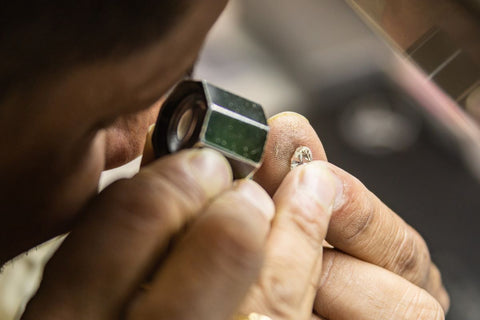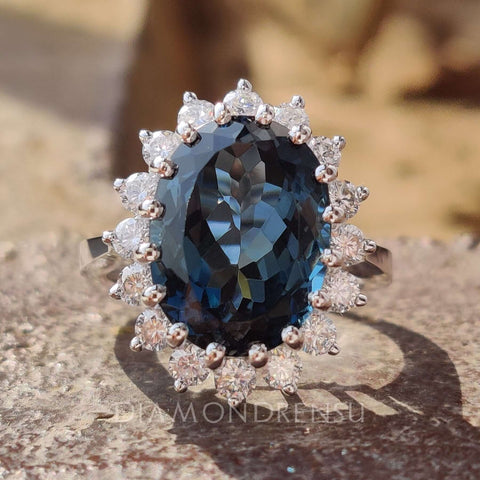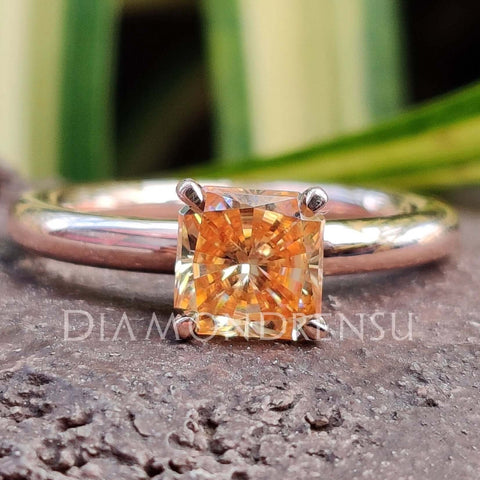
IGI Certification vs GIA: Unraveling the Key Differences
When it comes to diamond grading, two of the most reputable institutions in the industry are the International Gemological Institute (IGI) and the Gemological Institute of America (GIA). Both organizations provide grading services that assess the quality of diamonds based on the well-known 4Cs – carat weight, color, clarity, and cut. Each certificate issued by these institutions serves as a testament to the diamond's grade, giving buyers an assurance of the stone's quality and value.
IGI and GIA have their own unique grading methodologies and systems. GIA, being the older and more established of the two, introduced the color scale for grading diamond color and the diamond clarity scale. These scales have become industry standards, widely adopted by other grading institutions. IGI, on the other hand, is known for its commitment to understanding consumer concerns and implementing strict grading standards, making it the largest organization of its kind.
When comparing IGI certification versus GIA certification, it's essential to understand the differences in their grading processes and the impact on a diamond's value. By having a better understanding of these two important institutions, we can make more informed decisions when purchasing diamonds.
Overview of IGI and GIA
When it comes to diamond certification, two of the most reputable organizations to consider are the International Gemological Institute (IGI) and the Gemological Institute of America (GIA). In this section, we will provide a brief overview of these organizations and discuss their respective grading labs.
IGI Certification

The International Gemological Institute (IGI) is one of the leading gemological institutions in the world, offering a variety of services including diamond grading, gemstone identification, and jewelry appraisal. Established in Antwerp, Belgium, in 1975, IGI operates in multiple locations across the globe. With its large presence in various international markets, IGI has gained a solid reputation in the diamond industry. Their grading system is recognized and widely accepted in the trade.
IGI's grading labs are equipped with state-of-the-art technology, enabling their team of skilled gemologists to accurately assess each diamond's quality. The IGI certification process follows a rigorous and unbiased methodology, ensuring that each diamond is graded based on the 4Cs: carat weight, cut, color, and clarity.
GIA Certification

Founded in 1931, the Gemological Institute of America (GIA) is considered the world's foremost authority on diamonds, gemstones, and pearls. GIA is a non-profit organization that has developed the International Diamond Grading System™, which has become the industry standard for diamond grading. Its mission is to protect the public by providing unbiased reports and education.
GIA's grading labs are well-known for their integrity, consistency, and accuracy. Their team of experienced gemologists utilizes advanced technology, equipment, and research to properly evaluate each diamond. Diamonds that receive GIA certification have undergone a stringent process, adhering to the strictest standards of quality and professionalism.
The Grading Labs
Both IGI and GIA maintain state-of-the-art grading labs, employing cutting-edge technology and highly skilled gemologists to examine and certify diamonds. These labs adhere to industry standards, providing consistent and accurate evaluations.
While IGI and GIA both offer reliable diamond grading services, it is important to note that GIA is often regarded as having a more conservative approach and stricter standards when it comes to grading diamonds. This distinction has led some to prefer GIA certification over IGI. However, both institutions are widely respected and trusted for their expertise in the field of gemology.
In summary, choosing between IGI and GIA certification depends on individual preferences and the level of confidence desired in the diamond's quality assessment. Regardless of the choice, both institutions provide excellent services and play an essential role in maintaining standards within the gem and jewelry industry.
Grading System of IGI and GIA

When it comes to diamond grading, two of the most well-known and respected organizations are the International Gemological Institute (IGI) and the Gemological Institute of America (GIA). Both have established grading systems that are globally recognized for evaluating the quality of diamonds based on their unique characteristics. In this section, we will discuss the grading systems used by these organizations and how they relate to diamond grading standards.
The grading systems employed by both IGI and GIA evaluate the key attributes of diamonds known as the 4Cs: carat weight, color, clarity, and cut. These factors are crucial in determining the value and quality of a diamond.

- Carat weight: Both IGI and GIA use a standardized measurement for assessing a diamond’s carat weight. One carat is equal to 200 milligrams or 0.2 grams. Larger diamonds usually have higher values, but the other factors also significantly impact their overall worth.
- Color: Both organizations grade diamond color on a scale from D (colorless) to Z (light yellow or brown). Each grade represents a range of color, with higher grades indicating fewer traces of color. Color grades are vital in determining a diamond's appeal and value.
- Clarity: Clarity refers to the presence of inclusions or blemishes in a diamond. IGI and GIA use similar grading scales for clarity, ranging from Flawless (no inclusions or blemishes visible under 10x magnification) to I3 (inclusions and blemishes visible to the naked eye). The higher the clarity grade, the fewer imperfections a diamond has, and the more valuable it is.
- Cut: The cut of a diamond refers to its proportions, symmetry, and polish. Both IGI and GIA grade a diamond's cut on a scale from Excellent to Poor. A well-cut diamond maximizes its ability to reflect light, enhancing its overall appearance and value.
In addition to evaluating the 4Cs, IGI and GIA also issue grading reports or diamond grading reports to provide objective assessments of a diamond's characteristics. These reports document the detailed analyses of the diamond, including a plotted diagram to visually represent its inclusions and blemishes.
While both IGI and GIA have strict grading standards and provide comprehensive grading reports, GIA is often considered the industry standard for diamond grading due to its long-standing reputation and rigorous certification process.
To sum up, the grading systems used by both IGI and GIA assess diamonds based on the 4Cs and provide grading reports to support their evaluations. While differences may exist between the two organizations in terms of grading precision, both have established themselves as crucial players in the world of diamond grading, ensuring that customers receive accurate and reliable information about the diamonds they purchase.
Comparing IGI and GIA Grading Reports

When it comes to diamond grading reports, two popular options are the International Gemological Institute (IGI) and the Gemological Institute of America (GIA). In this section, we will compare these two organizations in terms of price and value as well as education and research.
| Aspect | IGI | GIA |
|---|---|---|
| Reputation | Well-regarded | Highly reputable |
| Grading Criteria | Varies by gemstone | Consistent for diamonds |
| Cost | Generally lower | Often higher |
| Turnaround Time | Quicker | Can take longer |
| Accessibility | Widely available | More limited |
Price and Value
IGI certification tends to be less expensive than GIA. The cost of an IGI grading report can vary depending on the size and quality of the diamond, but it is generally more affordable for consumers. However, the value of a GIA report might be higher, as it is recognized as the industry standard and has a reputation for accuracy and reliability. Diamonds with GIA certification can command higher prices in the market compared to those with IGI certification.
Education and Research
Both GIA and IGI are dedicated to advancing the knowledge and skills of professionals working in the jewelry industry. GIA is known for its world-renowned education programs, including the Graduate Gemologist diploma, which is considered the benchmark for professional expertise. GIA also conducts extensive gemological research to stay at the forefront of industry advancements and continually improve its grading processes.
On the other hand, IGI offers training programs in various aspects of the diamond and jewelry industry, such as jewelry design, diamond grading and identification, and colored gemstones. While not as prestigious as GIA's educational offerings, IGI's training programs can provide valuable knowledge to students and professionals.
In conclusion, both IGI and GIA grading reports have their merits. IGI grading reports can be a more cost-effective option, while GIA reports might hold more value in the market. As for education and research, GIA stands out as the industry leader. Ultimately, your preference between the two organizations may depend on your specific needs and budget.
Diamond Characteristics and Certification
When it comes to diamond certifications, there are two major organizations with reliable and accurate grading systems: the International Gemological Institute (IGI) and the Gemological Institute of America (GIA). Both organizations take into account several diamond characteristics, such as carat weight and size, shape, and natural original properties, to determine their quality. In this section, we will discuss these factors in more detail.
Carat Weight and Size
Carat weight is one of the most important factors determining a diamond's value. A carat is a unit of weight equal to 200 milligrams. As the carat weight increases, so does the rarity and value of the diamond. Both IGI and GIA certification processes assess the carat weight of the diamond to ensure accurate representation. The size of a diamond is closely related to its carat weight, and it greatly influences the overall appearance of the stone.
Keep in mind that two diamonds with the same carat weight might not have identical size measurements. Some stones may carry their weight in different parts of the stone, impacting their dimensions. This is why it's essential to understand the relationship between carat weight and size when selecting a diamond, as it helps determine the stone's value and appearance.
Shape and Natural Original Properties
The shape of a diamond is another important characteristic that greatly influences its appeal. Diamonds come in various shapes, such as round, princess, emerald, and cushion, just to name a few. The shape not only determines the overall look of the stone but also affects the way it interactswith light, showing off different types of scintillation, brilliance, and fire.
Both IGI and GIA certification processes include an evaluation of the diamond's shape and an assessment of its natural original properties. These properties include the stone's color, clarity, and cut quality. Analyzing these factors ensures that the diamond's appearance and light performance are accurately represented on the certification report.
- Color refers to the presence of natural hues within the diamond. Ideally, a diamond should be as colorless as possible, as traces of color can affect its value. The GIA and IGI use a grading scale from D (colorless) to Z (light yellow or brown) to evaluate the color of a diamond.
- Clarity refers to the presence of inclusions (internal) and blemishes (external) that may detract from the overall appearance of the stone. Both GIA and IGI have a clarity grading system that ranges from Flawless to Included.
- Cut quality refers to the level of craftsmanship and precision with which a diamond has been shaped and faceted. A well-cut diamond will have better light performance and a more attractive appearance compared to a poorly cut stone. Both IGI and GIA have a grading system for cut quality, which ranges from Excellent to Poor.
In conclusion, when purchasing a diamond, it's crucial to consider the various characteristics, such as carat weight and size, shape, and natural original properties. Understanding the differences between IGI and GIA certification processes can help you make a more informed decision.
Frequently Asked Questions
What are the main differences between IGI and GIA certifications?
Both IGI and GIA are reputable diamond grading institutions, but they have some differences in their certification process and grading standards. GIA (Gemological Institute of America) is recognized as the oldest and one of the most reputable labs worldwide, while IGI (International Gemological Institute) is also highly respected, especially when it comes to smaller stones and fancy-shaped diamonds.
How do IGI and GIA grading standards compare?
GIA is known for having stricter grading standards, particularly for color and clarity, compared to IGI. IGI may give slightly higher grades for a diamond that would get a lower grade if it were graded by GIA, although it is worth mentioning that the difference might not always be significant.
Is there a significant price difference between IGI and GIA certified diamonds?
Yes, there can be a noticeable price difference between IGI and GIA certified diamonds, with GIA certified diamonds typically demanding a higher premium due to their stricter grading standards and reputation. However, this might not always be the case, and it's crucial to evaluate a diamond based on its individual qualities and not just its certification.
How does the reputation of IGI and GIA certifications differ in the market?
GIA is often referred to as the gold standard in diamond grading due to its established reputation and strict standards. IGI, on the other hand, may be perceived as slightly more lenient in grading. This difference in reputation does influence consumer preferences, with GIA-certified diamonds often considered a safer choice based on their grading consistency.
Which certification is more widely accepted: IGI or GIA?
Although both certifications are widely accepted, GIA is generally considered the more universally acknowledged and trusted certification due to its long-standing reputation, strict grading standards, and consistency.
Do both IGI and GIA certify lab-grown diamonds?
Yes, both IGI and GIA offer grading and certification services for lab-grown diamonds. The grading process and criteria for lab-grown diamonds are similar to those of natural diamonds, with each laboratory evaluating the diamond's quality based on its carat weight, cut, color, and clarity.
Checkout some of our top collections:
Leave a comment
Please note, comments must be approved before they are published.













